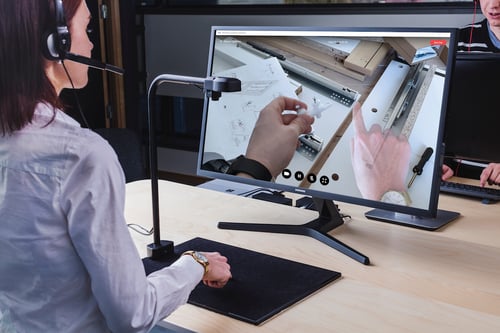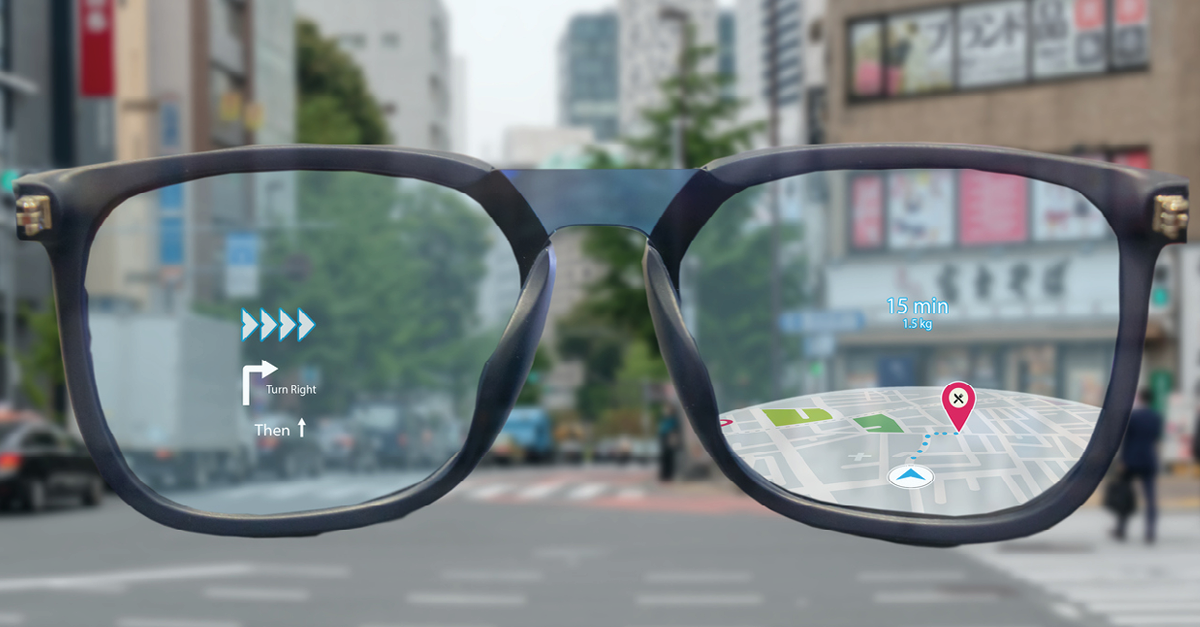Let’s face it. Some jobs heavily depend on using your hands and getting down and dirty. You might work in construction or a factory where your hands are your greatest ally. Calling someone when facing a problem could be a hassle unless the phone is hands-free. That’s where smart glasses enter the picture. Then all you need to solve a problem is your voice and XMReality software running on a pair of smart glasses, and you’re all set.
What are smart glasses?
But first things first, what are smart glasses? When we say smart glasses or smart eyewear, you might think of some science fiction movie where people use augmented reality in their glasses to become more powerful or solve life-threatening issues. Well, smart glasses are not quite that. But in many ways, they are precisely that.
AR Smart glasses are like wearable computers, depending on the context and usage; you can use them to add information alongside what you see, instruct them with your voice, or use them as a phone to call and text others.
In 2013, Google launched an early version of smart eyewear called Google Glass Explorer. They proved too uncomfortable and expensive to become a hit and were discontinued after 18 months. But they did, however, pave the way for other tech companies who soon started working on their prototypes.
What are some of the areas of use for smart glasses?
Today, we can find smart glasses in more places than we might think. Already in 2013, smart glasses were used in the health field, where an American doctor live-streamed a surgery through his smart glasses for his students to watch. A use case we see among some of our customers still today! Smart glasses have also been used by mountain bikers, whose purpose has been to show terrain information using augmented reality, commonly referred to as AR.
Many industrial companies use smart glasses as part of long-term planned commissions and installations where they first distribute them to customers for them to connect. Another example is the Norwegian Emergency Medical Services, where paramedics arrived at the scene of an incident and used smart glasses to communicate with the appropriate specialist doctor and hospital for faster and better care.

What does the future of smart glasses look like?
There are a few reasons why smart glasses are still on the rise and still haven't reached their full market potential. They sometimes lack a specific purpose, the price is still very high, and they tend to look clunky and unfashionable. However, the more recent editions of smart glasses focus on meeting customers’ expectations and needs by adding more durability, making them easier to use, and creating them to meet specific needs.
XMReality in smart glasses
As the different areas of use for smart glasses expand, XMReality continues to optimize how our product works on the market's most popular smart glasses. If you are already familiar with XMReality, you know what our technology is all about.
XMReality Remote Guidance is an advanced cloud-based video tool designed to connect and help customers quickly. The solution creates value in the typical industrial application by quickly and cost-efficiently solving hardware issues to minimize production line stand-stills and improve efficiency in support handling. You can send a call link to anyone you want and start a shared video stream where the receiver has a plethora of powerful tools for providing remote visual assistance, including features that assist in explaining and resolving the issue, such as pointing, pausing, and drawing, sharing your screen, etc.
With smart glasses as one of the most powerful options for the XMReality toolkit, we wanted to create a more effortless remote support experience for workers who need their hands to do the job while being supported remotely.

How you can interact with smart glasses differs depending on your needs. When using smart glasses, you can use your voice, gesture with your hands, or an external device like a phone. Some smart glasses are voice-controlled, and others are controlled via an external mobile device.
Who should use smart glasses for remote support?
Smart glasses are best used in industries where it is inefficient to hold a phone in one hand and follow instructions with the other. You have those nitty-gritty problems and need both hands to solve them, but at the same time need someone to guide you, showing you exactly how to solve the problem. They are also beneficial if you have long ongoing support or instruction sessions and you get tired of holding a phone in front of you for a few hours.
Smart glasses are meant to be an extension for those with specific issues or needs, not something everyone must have.
Are smart glasses for everyone?
If you’ve tried XMReality Remote Guidance and don’t experience the need for hands-free communication, smart glasses won’t be a must-have for you. Enjoy XMReality Remote Guidance support, and keep doing what you’re doing.
If there’s an urgent issue and troubleshooting to attend to, and the on-site person doesn’t have their glasses, then there’s limited or no time to install or send a pair of smart glasses. Then, it’s much quicker to connect using a Remote Guidance call link.
Want to know more?
If you are interested in learning more about XMReality combined with smart glasses, you can check out this page.
But if you are more interested in following the latest developments in the smart glasses space, we suggest checking out XR Today, who are always on top of the latest news in the mixed reality industry: XR Today






